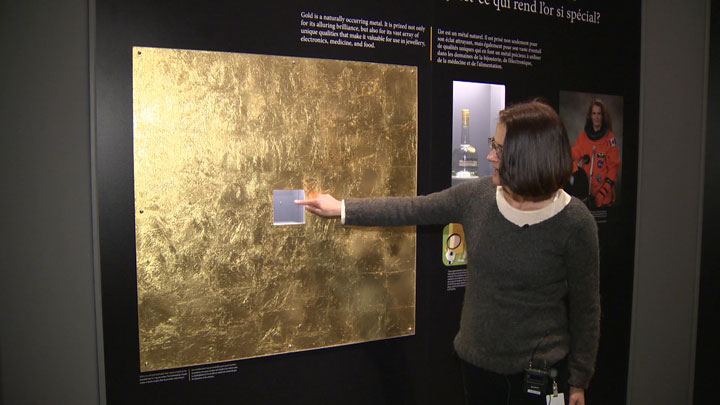HALIFAX – The Museum of Natural History in Halifax has unveiled a new exhibit that explores Nova Scotia’s golden history.

Throughout the world, gold has inspired artistic traditions, influenced culture, and helped shape history. The new display, called GOLD: A Nova Scotia Treasure, will give Nova Scotians a chance to see what gold means to the province.
“We’re very pleased to host this this show,” said Jeff Gray, a curator at the museum. “It is a joint sort of collaborative exhibit with the Art Gallery of Nova Scotia, the Museum of Industry, and our own collections unit from the museum.”
Gold means a lot more than just money — it represents great achievements. It’s awarded as the top prize for first-place athletes and teams, like Sidney Crosby’s medal when Canada won gold in hockey at the 2010 Olympics, and sailor Paul Tingley, who claimed gold at the 2008 Beijing Paralympics.
The exhibit also includes a display that plays a video by Fred Walsh about how to pan for gold.
“He’s an incredibly enthusiastic and knowledgeable gentleman and takes you through the whole process,” said Deborah Skilliter, the curator of geology at the museum. She said Walsh “demonstrates that even in today’s rivers here in Nova Scotia, you can still find some gold.”
There’s also an art display by Joseph Purcell, who painted the gold districts in Nova Scotia.
An eye-catching part of the display is Anne Murray’s gold record for the song “Snowbird”, which she received in 1970 from the Recording Industry Association of America. Also on display is Murray’s Grammy award, which she won for the song “A Little Good News”.
Gold is found mainly along the eastern shoreline of Nova Scotia. Just a single gram of gold can be pounded out into a one-metre square useful for gold plating according to Skilliter, who said it’s the material’s malleability that makes it possible.
Skilliter said the most popular use of gold is in jewelry.
“About 80 per cent of all the gold mined in the world is used for jewelry,” she said. “About 20 per cent is used in the field of electronics, medicine and aeronautics.”
Gold has no taste, no smell, is non-toxic and can be even be used in food and liquid — like a bottle of Goldschläger liqueur.
“There’s flakes of real gold in it, and there’s probably less than $5 worth in that bottle,” said Skilliter.
The museum will host the display until Jan. 14, 2014.




Comments